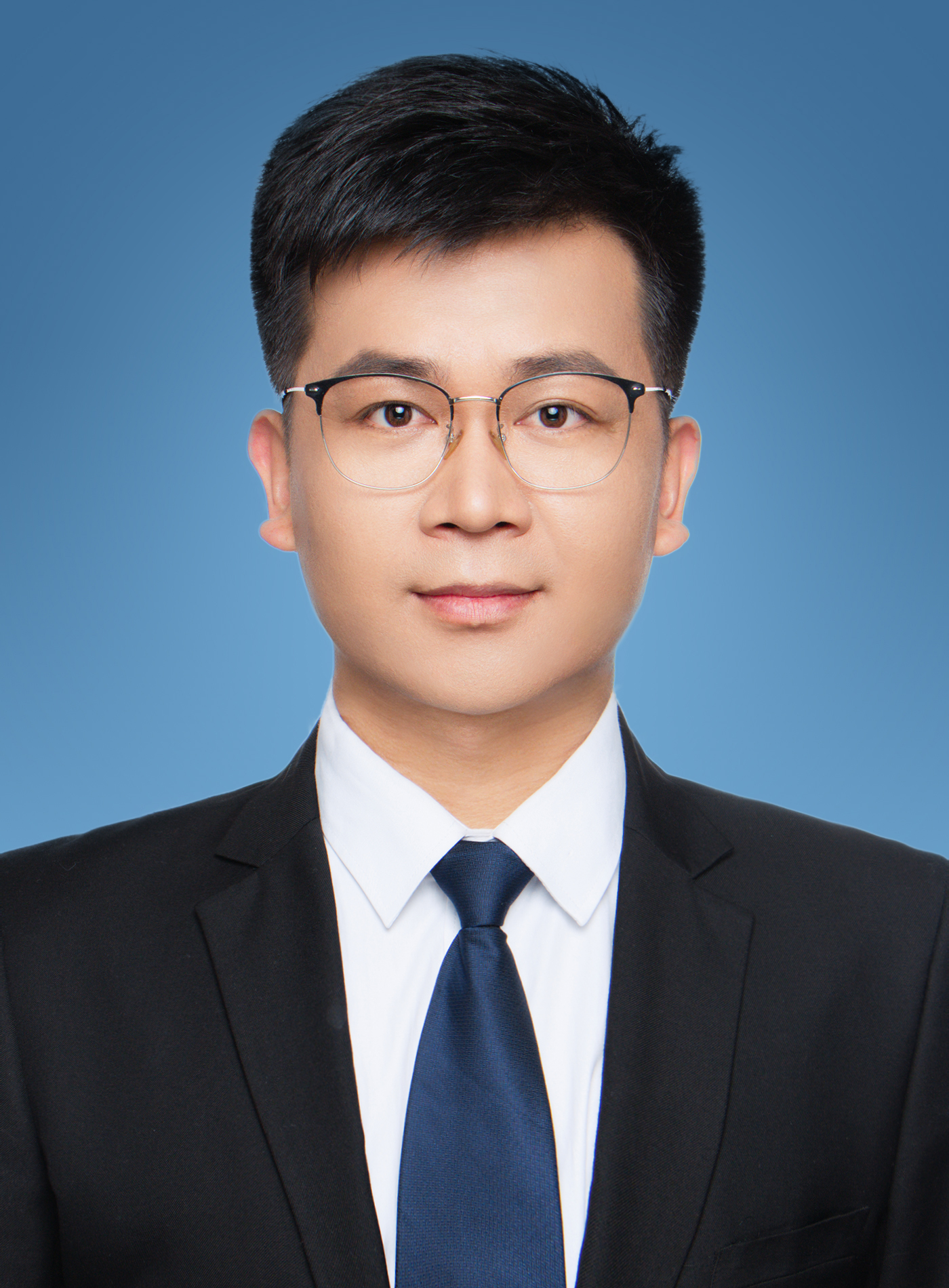
职 务:
专 业:固体力学
所在系所:力学与工程科学系/ 固体力学研究所
通讯地址:甘肃省兰州市天水南路222号36365线路检测中心入口,730000
电子信箱: zhangzhiwei@lzu.edu.cn
联系电话:
传 真:
2016.09—2019.06 北京工业大学,力学,获工学硕士学位 (导师:陈沛 副教授)
2019.09—2022.06 中国科学院力学研究所,固体力学,获理学博士学位 (导师:白以龙 院士,王军 副研究员)
2024.10— 至今 36365线路检测中心入口,36365线路检测中心入口,青年研究员
欢迎力学、物理、材料、机械等专业学生报考
2022.04 中国科学院力学研究所郭永怀一等奖学金
2021.11 博士研究生国家奖学金
2021.01 北京力学会第二十七届学术年会优秀论文奖
2019.06 北京市优秀硕士毕业生
2019.06 北京工业大学优秀硕士毕业生
1.2024.01—2026.12 A15型超导材料临界电流随应变退化机理及调控的实验研究,国家自然科学基金委员会, 青年基金项目(12302241),主持。
2.2023.07—2024.06 素化强韧镍基超合金的力学机制研究,甘肃省科技计划项目,在站博士后专项(23JRRA1118),主持。
3.2025.01—2028.12 基于固体传导冷却的无液氦射频超导关键问题研究,国家自然科学基金委员会,区域创新发展联合基金重点项目,参与(合作单位负责人)。
4.2024.10—2026.10 力学-超导相互作用的非线性力学,甘肃省科技领军人才项目(2 4RCKB008),参与。
5.2018.01—2021.12 采用纳米尺度堆垛层错突破单晶强度研究,国家自然科学基金委员会, 面上项目(11772332),参与。
6.2016.01—2018.12 减薄晶圆损伤层残余应力和力学性能测量方法研究,国家自然科学基金委员会, 青年基金项目(11502005),参与。
代表性论著:
[1]Z.W. Zhang*, X.Y. Zhang, R. Yong, J. Wang*, C.S, Lu, “The Ni3Al/Ni interfacial contribution to indentation size effect of Ni-based single crystal superalloys”, Solids, 2024, Minor revision.
[2]Z.W. Zhang*, X.Y. Zhang, R. Yong, J. Wang*, C.S, Lu, “Deformation mechanisms dominated by decomposition of an interfacial misfit dislocation network in Ni/Ni3Al multilayer structures”, Materials, 17 (2024), 4006.
[3]Q.T. Ran, Z. Jing, L. Shen, J. Zhou, C. Liu, Z.W. Zhang, X.Y. Zhang*, Suppression of flux avalanches in YBCO superconducting thin films by eddy currents, Superconductivity, 11 (2024), 100101. (封面论文)
[4]R. Zhang, Z.W. Zhang*, X.Y. Zhang*, “Fracture mechanisms and suppressed temperature effects of YBCO superconducting materials dominated by grain boundaries”, Engineering Fracture Mechanics, 303 (2024), 110139. (遴选为Advances in Engineering关键科学文章)
[5]J.B. Yang, Y.H. Li, J.H. Deng, Z.W. Zhang, J. Zhou, X.Y. Zhang*, “Novel Speckle Preparation and Heat Insulation Method for DIC Strain Measurement at Cryogenic Temperature and Large Deformation Environment”, Experimental Mechanics, 64 (2023), 73–84. (封面论文)
[6]L. Jiang, Z.W. Zhang*, Z. Yu, J. Zhou, H.D. Yong, X.Y. Zhang*, “Fatigue behaviors and damage mechanisms for Nb3Sn triple-helical structure at extremely low temperature”, Superconductivity, 8 (2023), 100065.
[7]Y.H. Li, N.N. Mu, S.Y. Tang, Z.W. Zhang, J. Zhou, H.D. Yong, X.Y. Zhang*, “Deformation and crack prediction of CORC cable induced by Poisson effect: Theoretical modeling and experimental validation”, Engineering Fracture Mechanics, 292 (2023), 109625.
[8]Z.W. Zhang, W. Cai, Y.H. Feng, G.H. Duan, J. Wang, J. Wang*, R. Yang, P. Xiao, F.J. Ke and C. Lu*, “Dislocation reactions dominated pop-in events in nanoindentation of Ni-based single crystal superalloys”, Materials Characterization, 200 (2023), 112883.
[9]R.H. Shi*, Y.C. Wu, F. Shuang, Z.W. Zhang, “Dipolar and quadrupolar characteristics of shear transformation in two dimensional metallic glasses”, Materials Today Communications, 34 (2023) 105389.
[10]Z.W. Zhang, W. Cai, J. Wang*, R. Yang, P. Xiao, F.J. Ke and C. Lu*, “Theoretical model for yield strength of monocrystalline Ni3Al by simultaneously considering the size and strain rate”, Transactions of Nonferrous Metals Society of China, 33 (2023), 816–823.
[11]Z.W. Zhang, Q. Fu, J. Wang*, R. Yang, P. Xiao, F.J. Ke and C. Lu, “Simultaneously achieving strength and ductility in Ni3Al nanowires with superlattice intrinsic stacking faults”, International Journal of Mechanical Sciences, 215 (2022), 106953
[12]Z.W. Zhang, Q. Fu, J. Wang*, R. Yang, P. Xiao, F.J. Ke and C. Lu, “Interaction between the edge dislocation dipole pair and interfacial misfit dislocation network in Ni-based single crystal superalloys”, International Journal of Solids and Structures, 228 (2021) 111128.
[13]Z.W. Zhang, Q. Fu, J. Wang*, R. Yang, P. Xiao, F.J. Ke and C. Lu, “Atomistic modeling for the extremely low and high temperature-dependent yield strength in a Ni-based single crystal superalloy”, Materials Today Communications, 27 (2021) 102451.
[14]Z.W. Zhang, Q. Fu, J. Wang*, R. Yang, P. Xiao, F.J. Ke and C. Lu, “Interaction between butterfly-like prismatic dislocation loop pairs and planar defects”, Physical Chemistry Chemical Physics, 23 (2021) 10377–10383
[15]Z.W. Zhang, Q. Fu, J. Wang*, P. Xiao, F.J. Ke and C. Lu, “Hardening Ni3Al via complex stacking faults and twinning boundary”, Computational Materials Science, 188 (2021), 110201.
[16]T Wei, Z.H. Zhang, Z.M. Wang, Q. Zhang, Y.S. Ye, J.H. Lu, Z.U. Rahman, Z.W. Zhang, “Ultrathin solid composite electrolyte based on Li6.4La3Zr1.4Ta0.6O12/PVDF-HFP/ LiTFSI/succinonitrile for high-performance solid-state lithium metal batteries”, ACS Applied Energy Materials, 3 (2020), 9428–9435.
[17]P. Chen*, Z.W. Zhang, C.S. Liu, T. An, H.P. Yu, F. Qin, “Temperature and grain size dependences of mechanical properties of nanocrystalline copper by molecular dynamics simulation”, Modelling and Simulation in Materials Science and Engineering, 27 (2019), 065012.
[18]P. Chen*, Z.W. Zhang, T. An, H.P. Yu, F. Qin, “Generation and distribution of residual stress during nano-grinding of monocrystalline silicon”, Japanese Journal of Applied Physics, 57 (2018), 121302.
[19]Z.W. Zhang, P. Chen*, T. An, H.P. Yu, F. Qin, “Mechanical properties of silicon in subsurface damage layer from nano-grinding studied by atomistic simulation”, AIP Advances, 8 (2018), 055223.
[20]C.S. Liu, P. Chen*, Z.W. Zhang, “Simulation of force, energy, and surface integrity during nanometric machining by molecular dynamics”, Machining and Tribology, Elsevier, Amsterdam, Netherlands, 2021.10, Chapter 7. ISBN: 9780128198896. (专著章节)
[21]P. Chen*, Z.W. Zhang, F. Qin, “Study of interfacial tensile and shear strength for Cu/Ta interface by molecular dynamic simulation”, 20th International Conference on Electronic Packaging Technology, HongKong, China, IEEE, 2019. (EI)
[22]Z.W. Zhang, P. Chen*, F. Qin, “Molecular dynamic simulation of grain size and work temperature effect on mechanical properties of polycrystalline copper”, 19th International Conference on Electronic Packaging Technology, Shanghai, China, IEEE, 2018, 228–232. (EI)
[23]Z.W. Zhang, P. Chen*, F. Qin, “Molecular dynamics simulation on subsurface damage layer during nano grinding process of silicon wafer”, 18th International Conference on Electronic Packaging Technology, Harbin, China, IEEE, 2017, 1133–1137. (EI)
学术会议:
[1]张志伟, “纳米尺度界面结构强韧镍基单晶超合金探索”, 中国材料大会2024暨世界材料大会, 2024, 7, 广州.
[2]张瑞, 张志伟*, 张兴义, “YBCO超导材料中晶界主导的力学变形机理研究”, 中国材料大会2024暨世界材料大会, 2024, 7, 广州.
[3]刘长生,张瑞,张志伟*,张兴义, “化学短程有序对316LN中Hall-Petch关系的强化效应”, 中国材料大会2024暨世界材料大会, 2024, 7, 广州.
[4]张志伟, “面缺陷强韧镍基超合金的原子机制”, 中国力学大会(CCTAM-2021+1), 2022, 12.
[5]张志伟, “Ni3Al素化增强增韧增硬的分子机制”, 北京力学会第二十七届学术年会, 北京, 2021, 3. (优秀论文奖)
[6]张志伟, “纳米结构化镍基单晶力学性能研究”, 首届全国力学博士生学术论坛, 北京, 2020, 11.
[7]P. Chen*, Z.W. Zhang, F. Qin, “Study of interfacial tensile and shear strength for Cu/Ta interface by molecular dynamic simulation”, 20th International Conference on Electronic Packaging Technology, HongKong, China, 2019.8.
[8]Z.W. Zhang, P. Chen*, F. Qin, “Molecular dynamic simulation of grain size and work temperature effect on mechanical properties of polycrystalline copper”, 19th International Conference on Electronic Packaging Technology, Shanghai, China, 2018.8.
[9]Z.W. Zhang, P. Chen*, F. Qin, “Molecular dynamics simulation on subsurface damage layer during nano grinding process of silicon wafer”, 18th International Conference on Electronic Packaging Technology, Harbin, China, 2017.8.
